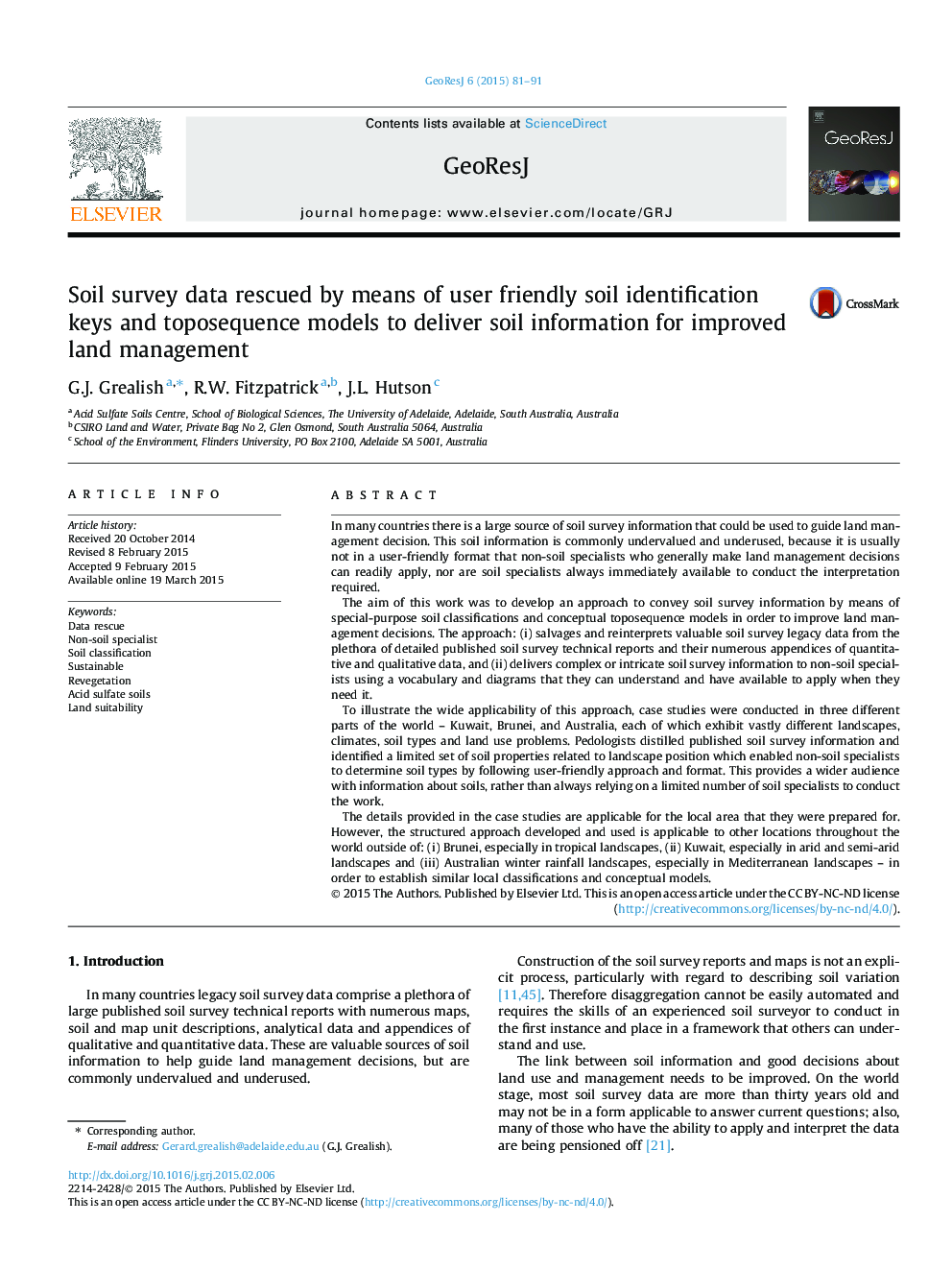| کد مقاله | کد نشریه | سال انتشار | مقاله انگلیسی | نسخه تمام متن |
|---|---|---|---|---|
| 4674457 | 1634296 | 2015 | 11 صفحه PDF | دانلود رایگان |
In many countries there is a large source of soil survey information that could be used to guide land management decision. This soil information is commonly undervalued and underused, because it is usually not in a user-friendly format that non-soil specialists who generally make land management decisions can readily apply, nor are soil specialists always immediately available to conduct the interpretation required.The aim of this work was to develop an approach to convey soil survey information by means of special-purpose soil classifications and conceptual toposequence models in order to improve land management decisions. The approach: (i) salvages and reinterprets valuable soil survey legacy data from the plethora of detailed published soil survey technical reports and their numerous appendices of quantitative and qualitative data, and (ii) delivers complex or intricate soil survey information to non-soil specialists using a vocabulary and diagrams that they can understand and have available to apply when they need it.To illustrate the wide applicability of this approach, case studies were conducted in three different parts of the world – Kuwait, Brunei, and Australia, each of which exhibit vastly different landscapes, climates, soil types and land use problems. Pedologists distilled published soil survey information and identified a limited set of soil properties related to landscape position which enabled non-soil specialists to determine soil types by following user-friendly approach and format. This provides a wider audience with information about soils, rather than always relying on a limited number of soil specialists to conduct the work.The details provided in the case studies are applicable for the local area that they were prepared for. However, the structured approach developed and used is applicable to other locations throughout the world outside of: (i) Brunei, especially in tropical landscapes, (ii) Kuwait, especially in arid and semi-arid landscapes and (iii) Australian winter rainfall landscapes, especially in Mediterranean landscapes – in order to establish similar local classifications and conceptual models.
Journal: GeoResJ - Volume 6, June 2015, Pages 81–91
